Glenn Pendlay was one of the leading coaches in American weightlifting — he held a Level 5 accreditation from USA Weightlifting (the highest available) and coached many high-level athletes to medals in national and international competitions.
In addition to his lifters’ success on the platform, he’s known for popularizing a strength-building exercise known as the Pendlay row — a barbell row performed from the floor to the stomach each rep. The movement has been used to build back strength and size in strength athletes and lifters of all levels. Here’s how to perform this highly effective movement.
- How to Do the Pendlay Row
- Pendlay Row Mistakes to Avoid
- Benefits of the Pendlay Row
- Muscles Worked by the Pendlay Row
- Who Should Do the Pendlay Row
- How to Program the Pendlay Row
- Pendlay Row Variations
- Pendlay Row Alternatives
- Frequently Asked Questions
Pendlay Row Technique Video
Coach Greg Walsh demonstrates a textbook Pendlay Row. Note the nearly horizontal torso, stationary upper body, and full stop at the bottom.
How to Do the Pendlay Row
The barbell row has been a long-running staple for building size and strength in the back, shoulders, and arms. The Pendlay row enforces specific technique to increase power output and make the target muscles work even harder.
Step 1 — Get Into the Starting Position
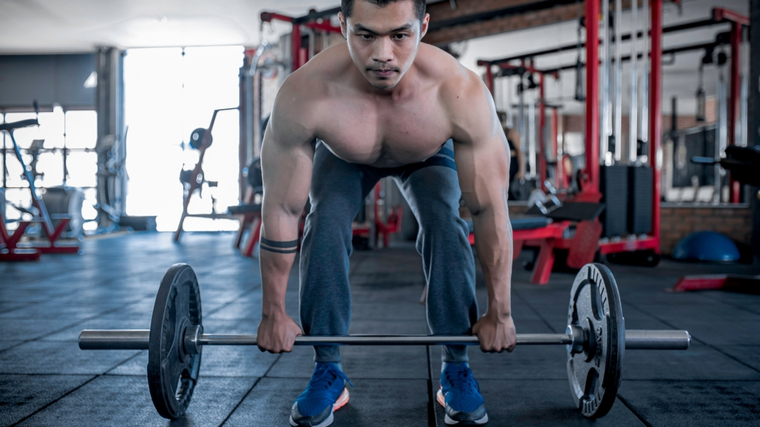
Begin with a loaded barbell on the floor directly above your toes. Stand with your feet slightly wider than shoulder-width. With a slight bend in your knees, push your hips back and bend at the waist until your upper body is parallel to the ground.
Arch your lower back and grab the bar with an overhand grip. Your grip width will be determined by your arm length. The priority is maintaining a parallel torso, so grabbing the bar wider than shoulder-width should be necessary.
Form Tip: You should feel tightness, not discomfort, in your hamstrings from holding the correct upper body position. If you feel pain, thoroughly warm-up your hips, hamstrings, glutes, and lower back to achieve the position more comfortably.
Step 2 — Perform an Explosive Pull
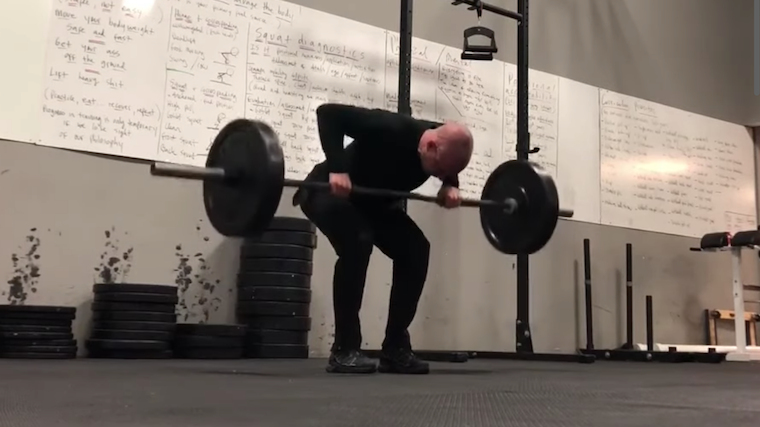
Flex your abs and squeeze the bar to create tension and stability. Pinch your shoulder blades together and quickly drive your elbows up while pulling the bar to your lower chest. Your torso should not lift from the parallel position.
The bar should physically touch your lower chest or upper abdomen before you allow it to return quickly to the ground. Don’t try to deliberately slow the barbell on the descent. Let the bar come to a complete rest on the ground before beginning the next rep.
Form Tip: If your torso moves significantly, reduce the weight on the bar and focus on maintaining a tight posture. Keeping a strict upper body position while lifting explosively is more important than swinging heavy weights.
Pendlay Row Mistakes to Avoid
The Pendlay row is specifically used to avoid technique issues more common with traditional barbell rows. Make sure you’re performing it correctly by avoiding these problems.
Moving Your Upper Body
One of the most noticeable differences with a Pendlay row is the significantly bent-over position, keeping the upper body parallel to the ground throughout the exercise. This allows maximum stress to be placed on the upper back and lat muscles, without using the lower back, glutes, and hamstrings to move the weight.

If your torso shifts to get the weight moving, you’re dissipating stress from the target muscles and reducing the strength and size benefit of the exercise.
Avoid It: Remember that the body position is deliberately bent forward in order to get optimal results. Be conscious of maintaining a strict parallel position. Never trade technique for more weight on the bar.
Bouncing Off the Floor
Each rep of a Pendlay row should be performed with the bar starting from a rested position on the floor. This requires your body to produce maximum force for each individual rep, instead of relying on the stretch-shortening cycle (a muscular phenomenon which uses a stretched position to increase strength). (1) This technique is sometimes referred to as “dead-stop training.”
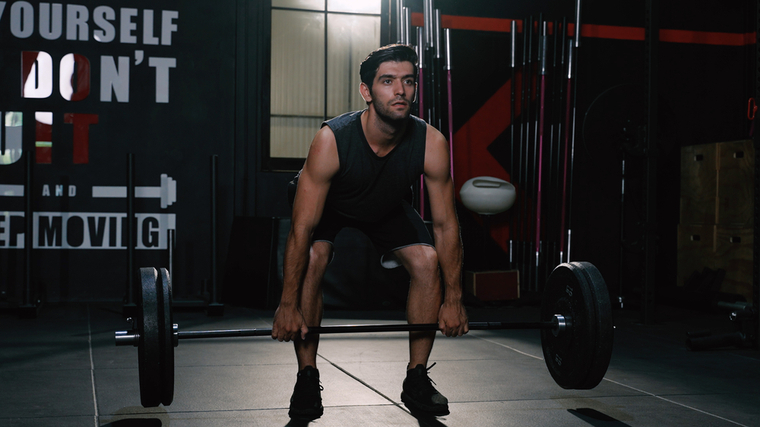
Eliminating this full rest at the bottom allows momentum to build, which decreases the body’s force production and reduces the exercise’s effectiveness.
Avoid it: Allow the bar to come to a complete stop on the ground after each rep. Releasing the bar and resetting your grip between each rep can also help to ensure a full stop. Approach any given set as a series of individual reps, not one group of several reps. For example, instead of “a set of five reps,” think of performing “five single reps” with one second between each.
Benefits of the Pendlay Row
The Pendlay row was initially used to support good old-fashioned strength gains. Like all barbell rows, it also delivers plenty of muscular growth as well. Here are all the reasons to train with this big, basic lift.
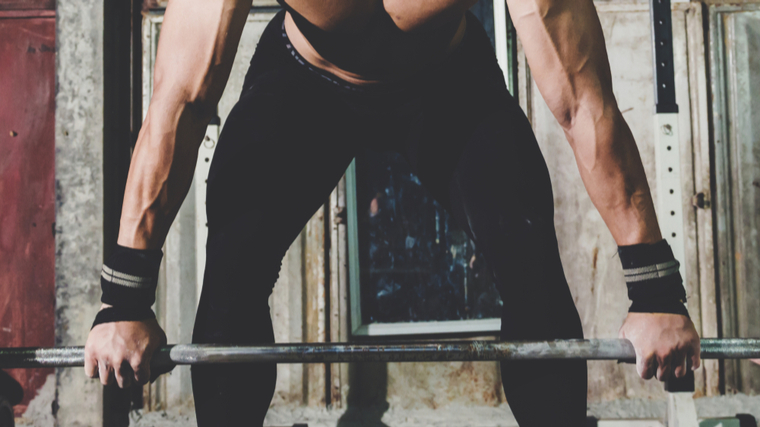
Back Strength
A strong back is essential for maximal strength production during pressing exercises and for reducing the risk of shoulder injuries. (2) The Pendlay row directly trains all the muscles of the back to directly increase pulling strength, as well as to carryover to bench and overhead pressing.
Explosive Power
Because the Pendlay row is performed from a dead-stop, an explosive lift is required to move the weight. This helps to increase muscle recruitment and has been shown to increase overall power and strength gains. (3)
Back Size
Directly training the lats and upper back with heavy weights is an ideal way to trigger muscle growth. The Pendlay row applies muscular stress to these body parts, along with the biceps and forearms, making it an excellent cornerstone for any back-building workout.
Muscles Worked by Pendlay Row
The Pendlay row is a compound (multi-joint) exercise coordinating a number of muscles to complete the lift. This intense exercise hits nearly every muscle on the back half of the body, and then some.
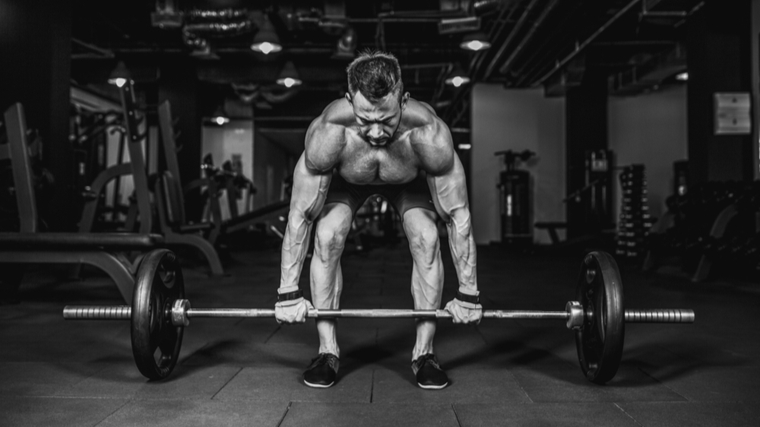
Upper Back
The upper back — consisting of the trapezius, rear deltoids (shoulders), rhomboids, and other smaller muscles — works primarily to control the shoulder blades (scapulae). The Pendlay row activates the upper back on each repetition, helping to lift the bar from the ground and pull the bar into the top position.
Lats
The latissimus dorsi (lats) are the largest muscles on the back, running near your ribs and from under your arms to your lower back. They work to bring your arm in towards your body from an extended position, making them the primary mover during any rowing exercise.
Spinal Erectors
The spinal erectors are a pair of muscular columns running the length of your spine. They work to control your torso position at the waist (bending forwards or sideways, and rotating). During the Pendlay row, the spinal erectors work to maintain a static upper body position.
Biceps
The biceps brachii (biceps) control flexion at the elbow, bending your arm into a closed position. While they don’t undergo a complete contraction during a Pendlay row (a wider grip on the bar prevents a full biceps contraction), the biceps help to pull the weight towards your body and complete the lift in the top position.
Forearms
The forearms are technically composed of two separate muscles — the flexors on the bottom side of the forearm and the extensors on the top side. Maintaining a secure grip on the barbell during Pendlay rows heavily activates the flexors, while controlling the bar during the upwards lift recruits the extensors.
Who Should Do the Pendlay Row
Like many compound exercises, lifters with a variety of goals can benefit from incorporating the Pendlay row into their workouts.
Strength and Power Athletes
Lifters focused on moving serious weights in competition (or, really, for recreation too) can benefit from the strength and power built from Pendlay rows. Coach Pendlay initially used the exercise to assist the powerlifts and eventually used it as a staple for his Olympic weightlifting champions.
Training for Muscle
Heavy rowing exercises have consistently built large, muscular backs. The Pendlay row develops thicker, wider lats and an upper back to match.
How to Program the Pendlay Row
To efficiently train for size and strength without excessive fatigue in the support muscles of the lower back, which would compromise technique, the Pendlay row is best trained with relatively lower reps. Here are some effective guidelines
Moderate Weight, Low Repetition
Focusing on the Pendlay row’s explosive performance can sometimes mean applying more force to less weight. Training for two to six sets of two to four reps can prioritize maximum force production, which leads to more power development.
Heavy Weight, Low Repetition
Three to five sets of three to five reps is a time-tested way to move heavy weights on big compound lifts, delivering size and strength gains. When you begin lifting heavier weights while keeping strict form, you open a very big door to very big results. Remember that you may not be able to lift as much with the Pendlay row as you can with a traditional bent-over row.
Pendlay Row Variations
The Pendlay row delivers plenty of benefits, but not all lifters may be ready to dive into this big lift. Here are the best ways to work up to Pendlay rows.
Chest-Supported Row
The chest-supported row allows the back to be trained without requiring any lower body stabilization. This makes it ideal for lifters working around a lower back issue or lifters who may have mobility restrictions preventing them from reaching the parallel torso position needed for Pendlay rows.
Another benefit of many chest-supported row machines is a variety of gripping handles, which can slightly alter recruitment by emphasizing different muscles of the back.
Neutral-Grip Two Dumbbell Row
While the single-arm dumbbell row is common, performing the movement with two dumbbells at once is an excellent “gateway” to barbell rowing. By requiring both sides of the body to carry their share of the load (no weightlifting pun intended), strength discrepancies in muscles on either side can be more easily noticed and addressed.
Using a neutral-grip also reduces strain on the shoulder joint and allows increased muscular stress on the biceps and upper back.
Reverse-Grip Barbell Row
The reverse-grip barbell row involves a supinated (palms up) grip which significantly increases biceps activation and changes the exercise’s range of motion, which affects the back muscles.
The trapezius is more significantly activated due to a more upright torso angle and the lats are kept under constant tension with a significant stretch in the bottom position.
Pendlay Row Alternatives
There are a handful of exercises which can build size, strength, and power like the Pendlay row. Here are some of the top choices.
Barbell Row
While the Pendlay row involves a strict, parallel torso position and pulling each repetition from the ground, “breaking” those rules turns the barbell row into a different back-building beast.
The same muscle groups are activated to varying degrees. A slightly angled torso position reduces the hip and hamstring mobility requirement or Pendlay rows, while the muscles are kept under constant tension without resting the barbell. This makes the exercise more suitable for moderate to higher repetitions without fatiguing the supportive muscles.
Kroc Row
If a Pendlay row is considered a “strict barbell row,” a Kroc row could be considered a “controlled chaos dumbbell row.” It’s typically performed using heavy weights for high-rep sets and is often mistaken for standard single-arm rows being done with poor form.
Kroc rows can be very effective for building upper back strength and size even though they involve leg drive and body English rather than super-strict upper body pulling.
Power Clean
The power clean is arguably one of the most beneficial exercises that an athlete can perform in the gym. (4) It’s a classic staple in strength and conditioning programs for contact sports and is a variation of the clean and jerk from competitive Olympic weightlifting.
The power clean builds explosive total-body strength while packing size onto the upper back and traps, specifically. Note: When performing power cleans (or any Olympic lift variation), the bar should only be dropped from the top position if you’re using bumper plates and a specific lifting platform.
FAQs
My grip fatigues before the end of my set. Should I use lifting straps?
With many rowing exercises, and back exercises in general, muscular fatigue setting into the smaller muscles of your grip and forearms before the larger back muscles is a common issue. While grip strength often improves relatively quickly, it shouldn’t affect the primary goal of any exercise.
Supporting your grip with lifting straps during the heaviest and most challenging sets can improve performance overall. Over-relying on lifting straps, however, such as wearing them when lifting less-challenging weights, can prevent the development of grip strength.
Why does my lower back hurt during the exercise?
Keeping your torso in a parallel position is essential in the Pendlay row. However, some lifters may find that this position aggravates lower back pain or they may be unable to achieve sufficient depth in the first place.
The solution is to address flexibility and mobility in the lower back, hamstrings, glutes, and hips. Depending on your specific needs, it could be as simple as performing light weight single-leg deadlifts at the start of each workout or as thorough as consistently practicing a complete hip mobility series.
Pendlay Rows for Power
The Pendlay row has supported strength and power development for nearly three decades and has been used by top lifters around the world. With a simple barbell, and more than a few weight plates, you can add it to your own workouts and build world-class strength and size.
References
- Seiberl, Wolfgang et al. “Editorial: The Stretch-Shortening Cycle of Active Muscle and Muscle-Tendon Complex: What, Why and How It Increases Muscle Performance?.” Frontiers in physiology vol. 12 693141. 20 May. 2021, doi:10.3389/fphys.2021.693141
- Escalante, Guillermo DSc, MBA, ATC, CSCS, CISSN1; Fine, Daniel SPT, CSCS2; Ashworth, Kyle SPT, CSCS2; Kolber, Morey J. PT, PhD, CSCS2 Progressive Exercise Strategies to Mitigate Shoulder Injuries Among Weight-Training Participants, Strength and Conditioning Journal: February 2021 – Volume 43 – Issue 1 – p 72-85 doi: 10.1519/SSC.0000000000000547
- Aagaard P, Simonsen EB, Andersen JL, Magnusson P, Dyhre-Poulsen P. Increased rate of force development and neural drive of human skeletal muscle following resistance training. J Appl Physiol (1985). 2002 Oct;93(4):1318-26. doi: 10.1152/japplphysiol.00283.2002. PMID: 12235031.
- Huyghe, Thomas & Goriss, Brent & DeLosAngeles, Ernest & Bird, Stephen. (2021). Exploring The Power Clean. International Journal of Strength and Conditioning. 1. 10.47206/ijsc.v1i1.95.
Featured Image: kittirat roekburi / Shutterstock






